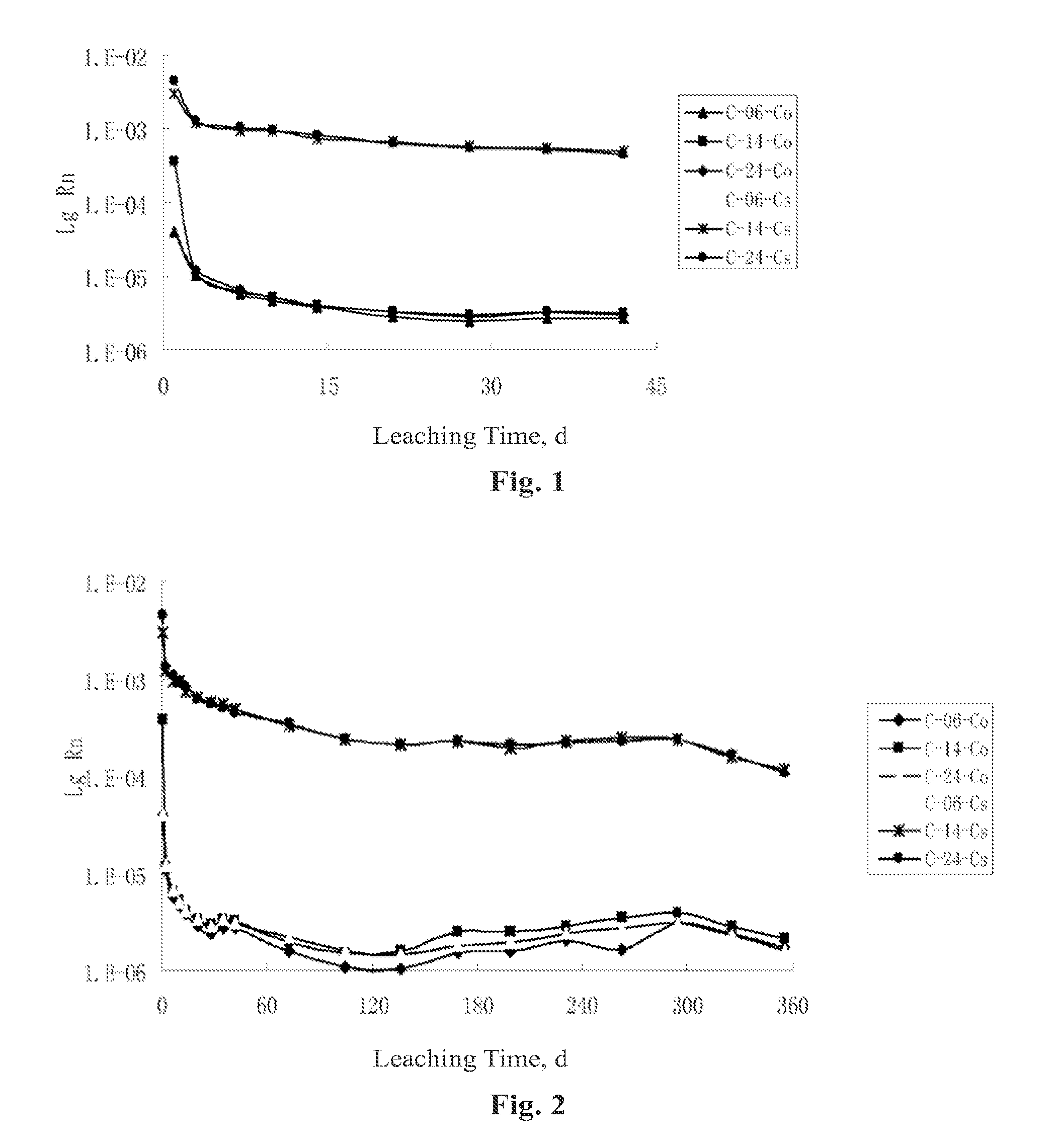Cement curing formulation and method for high-level radioactive boron waste resins from nuclear reactor
a nuclear power plant and waste resin technology, applied in the direction of solid waste management, nuclear elements, sustainable waste treatment, etc., can solve the problems of difficult regeneration of waste resins, complete non-condensation, and quick condensation of slurry, and achieve low solidification strength and high leaching rate
- Summary
- Abstract
- Description
- Claims
- Application Information
AI Technical Summary
Benefits of technology
Problems solved by technology
Method used
Image
Examples
example 1
[0069]A cement solidification formulation for the high level boron containing radioactive waste resins from a nuclear power plant, on the basis of solidifying 100 kg of the high level boron containing waste resins, this formulation comprised by weight: 198 kg of ordinary portland cement 42.5#, 11 kg of lime, 30 kg of water, 0.25 kg of sodium polyacrylate, and 3.70 kg of additives (the mixture of sodium hydroxide and lithium carbonate). In this example, the high level boron containing radioactive waste resins had a containment rate of 46%.
example 2
[0070]A cement solidification formulation for the high level boron containing radioactive waste resins from a nuclear power plant, on the basis of solidifying 100 kg of the high level boron containing waste resins, comprising: 184 kg of ordinary portland cement 42.5#, 10 kg of lime, 19 kg of water, 2 kg of sodium polybutenoate, and 2 kg of additives (a mixture of sodium hydroxide and sodium silicate). In this example, the high level boron containing radioactive waste resins had an containment rate of 50%.
example 3
[0071]A cement solidification formulation for the high level boron containing radioactive waste resins from a nuclear power plant, on the basis of solidifying 100 kg of the high level boron containing waste resins, comprised the raw materials by weight of: 170 kg of ordinary portland cement 42.5#, 9 kg of lime, 29 kg of water, 1 kg of polycarboxylate water reducing agent SikaViscoCrete 20HE (commodity brand), and 2.3 kg of additives (a mixture of sodium silicate and lithium carbonate), and the high level boron containing radioactive waste resins had a containment rate of 59%.
PUM
| Property | Measurement | Unit |
|---|---|---|
| weight | aaaaa | aaaaa |
| weight | aaaaa | aaaaa |
| weight | aaaaa | aaaaa |
Abstract
Description
Claims
Application Information
 Login to View More
Login to View More - R&D
- Intellectual Property
- Life Sciences
- Materials
- Tech Scout
- Unparalleled Data Quality
- Higher Quality Content
- 60% Fewer Hallucinations
Browse by: Latest US Patents, China's latest patents, Technical Efficacy Thesaurus, Application Domain, Technology Topic, Popular Technical Reports.
© 2025 PatSnap. All rights reserved.Legal|Privacy policy|Modern Slavery Act Transparency Statement|Sitemap|About US| Contact US: help@patsnap.com

